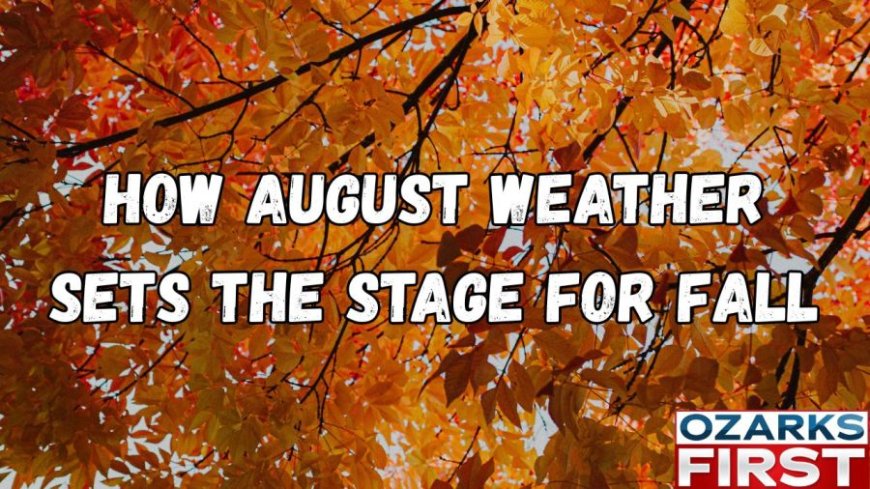How August weather sets the stage for fall in the Ozarks
August is often associated with summer's last stand, but August is also a month of change. Did you know we lose over an hour of daylight in August? We go from 14 hours and 2 minutes on August 1 down to 12 hours and 59 minutes on the 31st. The increasingly shorter days throughout the [...]

August is often associated with summer's last stand, but August is also a month of change. Did you know we lose over an hour of daylight in August? We go from 14 hours and 2 minutes on August 1 down to 12 hours and 59 minutes on the 31st.
The increasingly shorter days throughout the month gradually shift the seasons from summer to fall, although the occasional 90-degree day is still possible even in September. The average high temperature on August 1 is a toasty 90° while the 31st of August has an average high temperature of 87°. Overnight temperatures steadily decrease too, going from near 70° on the 1st down to 65° on the 31st.

Extended periods of hot and dry weather in August can put stress on trees, which can result in a less vibrant and thinned-out fall color display. You don't necessarily want an instant change to freezing temperatures either. Both weather extremes can lead to a shorter, less vibrant fall color season. Ideal conditions are warm, sunny days and cool, clear nights, especially when leaves begin the color-change process in September and October.
While temperatures play a significant role in producing the vibrant fall colors we all look forward to, rainfall earlier in the year is also an important factor.


High soil moisture can aid in trees retaining their leaves into the fall. Conversely, a hot and dry August - as it often is in the Ozarks - can cause trees to drop their leaves before the color change sets in. This summer has featured plenty of rain, so the soil moisture is in good shape for now.
The broader climate backdrop can also indicate if the weather will be conducive to fall colors. The current El Niño Southern Oscillation (ENSO) is neutral. This means neither El Niño nor La Niña is present, which makes fall forecasting more dependent on local weather trends. As many of us know, the weather in the Ozarks can be quite erratic. A few strong cold fronts or extended heat waves can shift the seasonal rhythm.
August thunderstorms can be a double-edged sword. They can bring desperately needed rainfall or bring damaging wind gusts and hail, which can strip trees of leaves, leaving forests looking ragged before fall even starts. A late summer storm can easily throw a wrench into our fall color ambitions.

While August isn't necessarily the make-or-break month for determining fall color vibrancy, it does need to be considered. Heat waves, drought, and late summer severe storms can all have an impact on how the fall colors will shape up. As this August leans mild in both temperature and rainfall, leaf peepers should keep an eye on nighttime lows, rainfall trends, and storm severity. The next few weeks may quietly shape the color, timing, and richness of the Ozarks' most beloved season.
What's Your Reaction?





















